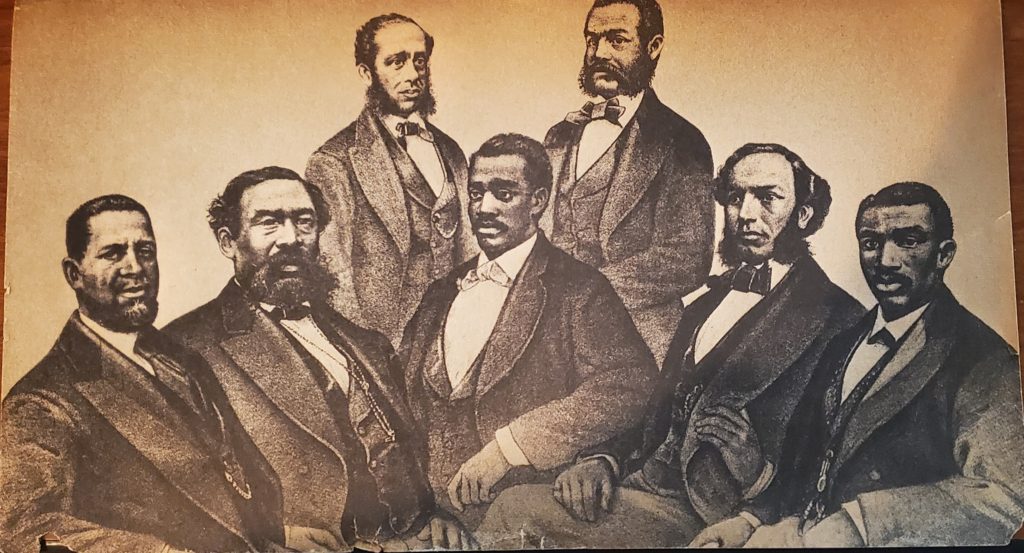According to the book, The Negro Pilgrimage In America, by C.L. Lincoln, in March, 1867, Congress passed the First Reconstruction Act. The goal was to defeat the conservative reconstruction policies of President Andrew Johnson. The act provided military rule in the South, and the states were divided into five military districts. State governments recognized by Johnson were abolished. As a result, new elections were held to fill state offices.
Lincoln wrote, “Congress declared that no state could be represented in the national legislature or be returned to civilian control until a duly elected state convention ratified the “Civil War Amendments” to the Constitution; tied to that provision was the additional requirement that Negroes be given the vote. Those Southerners who had held high military or political positions in the Confederacy were barred from taking active roles in the state conventions.”
There were 1,330,000 voters who registered under the Reconstruction Acts. Of that number, 703,000 were black and 627,000 were white. The majority black voters occurred because many white people could not take an oath that they had not given aid and comfort to enemies of the United States. Poor white people benefited from the new laws because for the first time, they were freed of restrictive property qualifications and were able to register to vote.
Two black men, Hiram R. Revels and Blanche K. Bruce, were elected United States Senators from Mississippi. Over a period of eleven years, twenty-two black men served as members of the House of Representatives. Several other black men served in high public offices in Southern state governments. Pinkney B. Pinchback served briefly as the Governor of Louisiana. Several black men were elected to state legislatures. It is worth noting that in South Carolina, black men were the majority in the lower house, while white men retained control of the Senate.
Unfortunately, some black men elected to state offices were illiterate and incompetent. This was no fault of their own. It had been illegal to educate formerly enslaved people. They lacked the education and experience to fulfill their duties. Overall, the quality of black legislators in state houses was high.
The majority of local, state, and Federal officials were Southern white men. Some whites came from the North to make financial profits from the defeated South. These men were known as “carpetbaggers.” They had little concern for Southern white people or black people. They were able to count upon the black vote by passing themselves off as friends from the North. They were joined in their exploits by some white Southerners known as “scalawags.” They were all corrupt and dominated local governments while lining their pockets.
It didn’t take long to realize that education was the greatest need if black people were to benefit from their freedom and have a lasting role in politics. “Black Reconstruction” legislatures focused on public education. White teachers from the North came down South to help establish and staff the schools.
General O.O. Howard, an Army officer, was head of the Freedman’s Bureau. He founded Howard University in Washington, D.C. Black and white people were dedicated to education and founded many of the historically black colleges and universities.
White Southerners suspected white teachers of teaching social equality to black students. Many of the schools were burned and the white teachers were forced to return back North. In more progressive Southern cities, white women taught black children and encouraged them to achieve.
Francie Mae, January 25, 2022.
Reference
Lincoln, C. Eric November 1967. The Negro Pilgrimage In America. Bantam Pathfinder Books.
